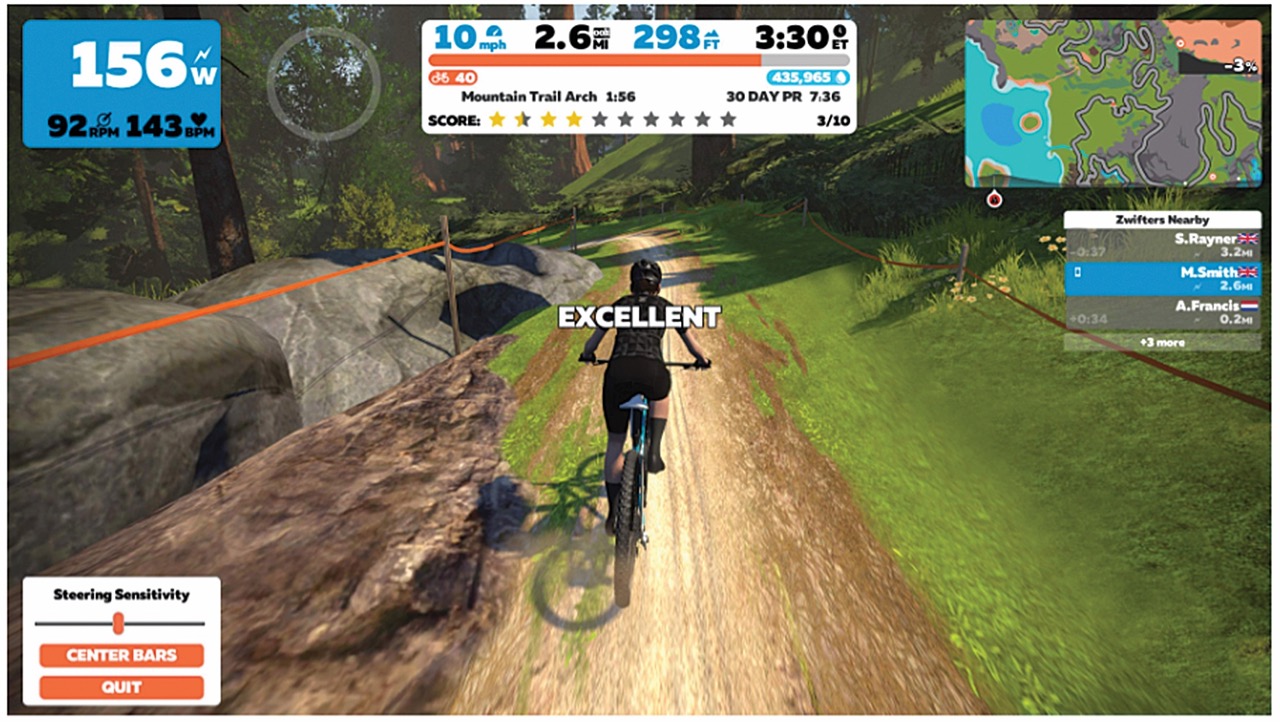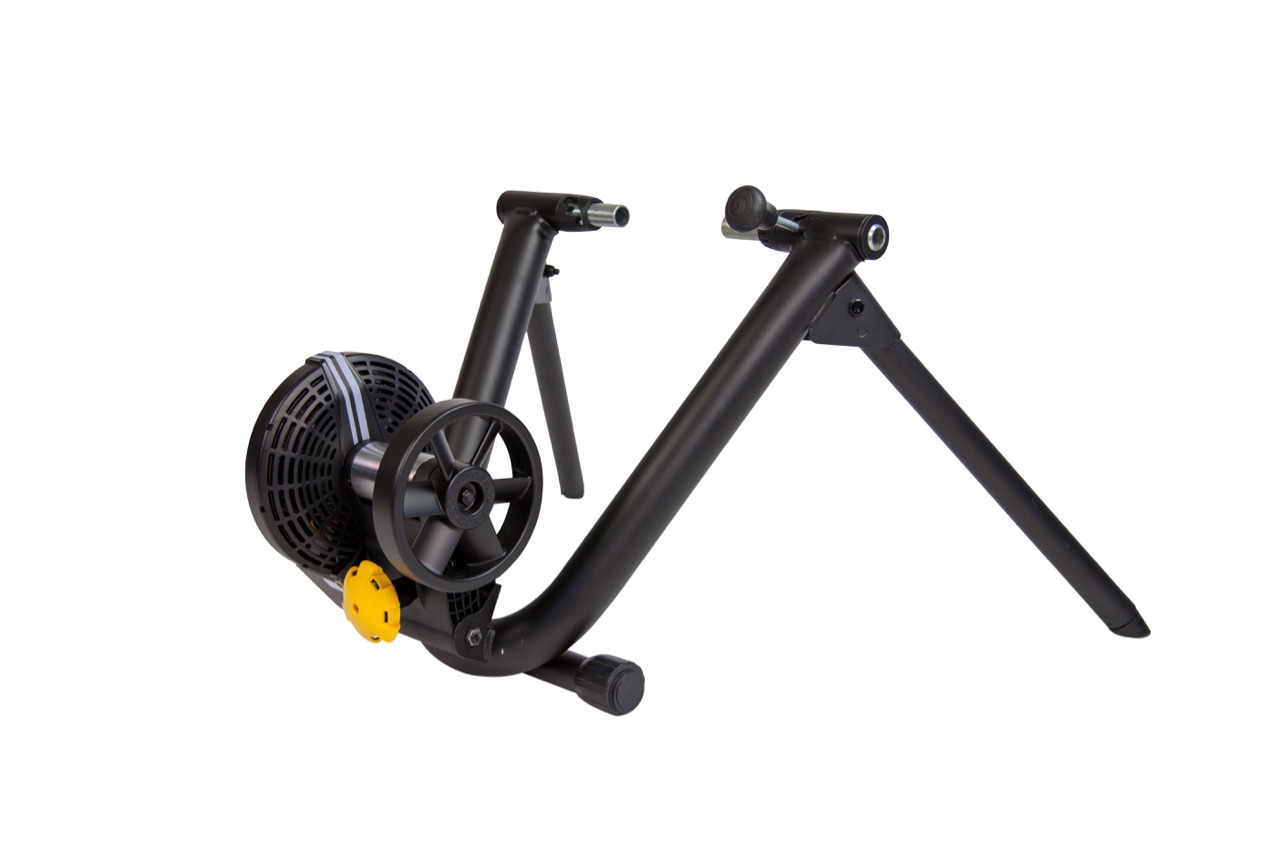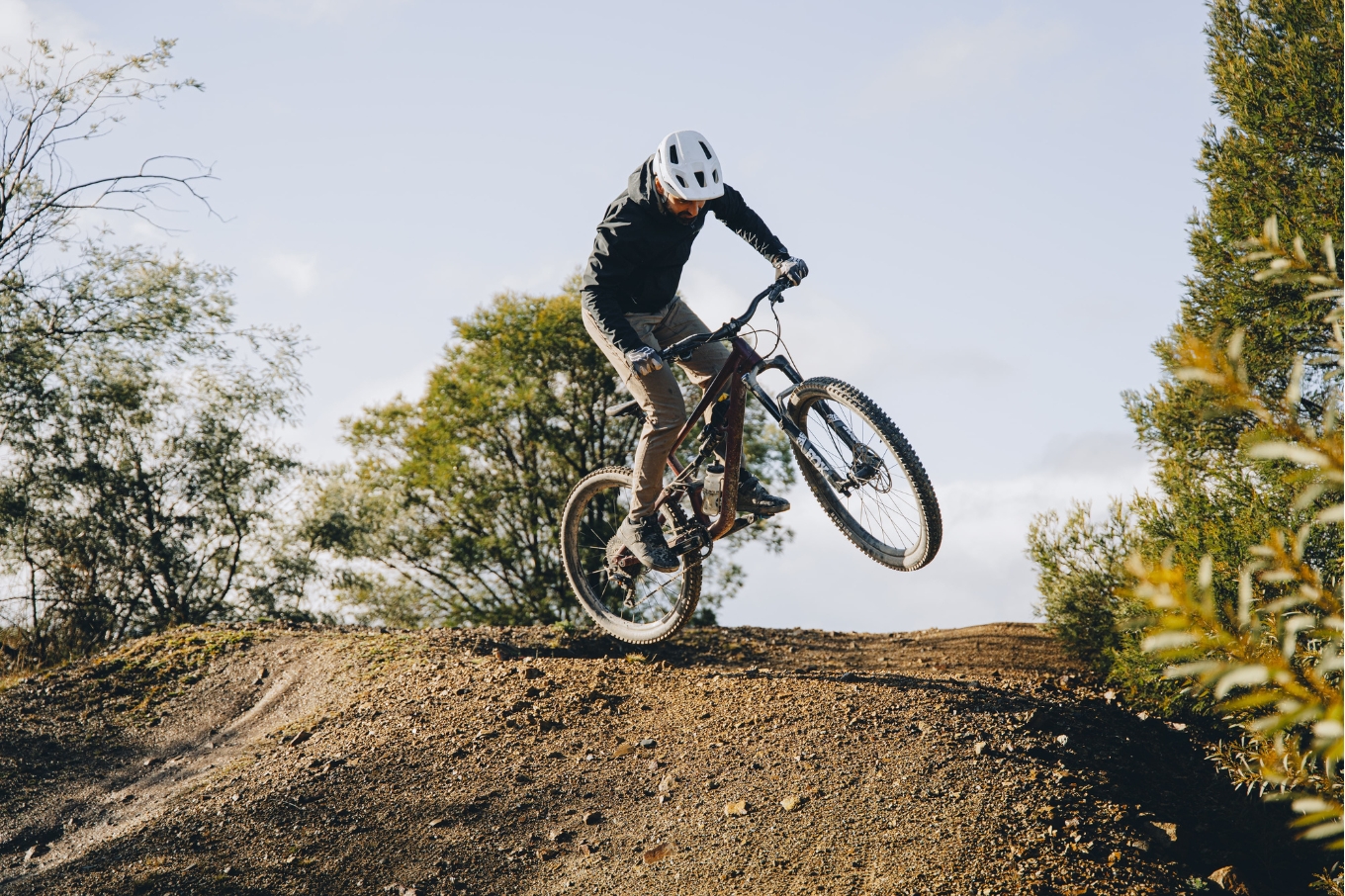Surviving winter and the great indoors
Learn the ins-and-outs of indoor riding to survive winter!
Words: Colin Levitch
In most places around Australia, we are blessed with warm temperatures and trails which remain clear and rideable year-round, with the most significant barrier to entry being short days. There is no reason to completely hang up your mountain bike this winter, read on to find out how the crew at AMB stays fit and sane during the winter, and our tips for training indoors.
Indoor training
When the weather sucks and trails are wet, spending some quality time on the indoor trainer can be a huge benefit to your riding. Equally, when your outside movements are restricted for health reasons, you can still get a solid workout inside, and have some fun doing so.
"I think mountain bikers are actually ideal indoor training candidates, as backwards as that may seem,” says Jonathan Lee, the Communications Director at TrainerRoad. “The reason is, road cyclists can conveniently work structured training into their chosen form of riding, but that's not the case for mountain bikers."
"Trying to do a structured workout on the trail is difficult, and can be dangerous to you and others, but above all, it's a great way to suck the fun out of an awesome trail. Additionally, most roads can be ridden on a road bike with relatively low fitness, but just making it up a trail can be really hard! What's more, when you are fit, it makes mountain biking so much more enjoyable," continues Lee, who is also a Yeti Cycles ambassador and a nationally ranked XC racer in the US.
You will see the most fitness gains using structured workouts because they are specifically designed to target different physiological systems, using intervals at different intensities. Usually measured in power, to get the most out of these intervals you'll need to hit and hold the targets within a few watts either side. This can be pretty difficult in an outdoor setting because of external variables like hills, descents and headwinds; the indoor trainer removes all of those factors because you're pedalling in place. It also means riding indoors is super time efficient.
Training apps
To most, the thought of spinning away, not going anywhere is a grim prospect. Luckily, there is an ever-growing list of apps for your phone, tablet and computer that can not only help to keep you entertained as you pedal nowhere fast, but they also have workouts and training plans designed by high profile and trustworthy coaches.
Unless you've been living under a rock for the past few years, you've probably heard of Zwift, the massive multiplayer online training game — it's a bit like training with party poppers and a Hawaiian shirt. Currently, there are six worlds, with seemingly endless kilometres of virtual tarmac, gravel roads and a bit of singletrack beginning to appear around Watopia. You can even outfit your avatar with a Specialized Epic, Scott Spark or Canyon Lux. Zwift have even added steering input to their offroad trails! We expect to see even more advances in this space.

On Zwift, you can jump in for a race, a training session, or just arrange a private group ride with friends. They might be in their living room a few kilometres away – or on the other side of the world. If you download the Zwift Companion App, it's easy to stay in touch with whoever has logged into Watopia at the same time as you. If you're low on motivation, chances are Zwift will have something to keep you entertained and pushing the pedals.
TrainerRoad, on the other hand, is all about intervals without the additional fluff — they were also the first to launch an indoor training app and invented virtual power, more on that later. With a catalogue of over 2000 workouts, TrainerRoad guides you through the leg-burning process using a bright blue bar graph, and easy to read cues in big text. As you ride, you’ll also see explanations as to the ‘why’ behind each set, and reminders about relaxing your shoulders and breathing deeply.

Then there is The Sufferfest, founded by American expat David McQuillen, who now lives in Hobart, Tasmania. The Sufferfest combines interval training with officially licensed UCI cycling footage and music. It's not just race footage stitched together, each Sufferfest video has a storyline about riders from the fictional country of Sufferlandria, with a healthy heaping of humour mixed throughout. A subscription to the app also gives you access to weight training programs, yoga sessions and even mental training too.

If none of these strikes your fancy, there are heaps of other apps to checkout like FulGaz, Rouvy and Kinomap, in addition to those run by the respective trainer brands.
What you'll need to get started
To get started with a training app you'll need a device to run the app, most have Mac, Windows, iOS and Android apps currently available, with some even adding support for Apple TVs.
From here your gear requirements become a bit more complex, but we're here to help you navigate through. There are three types of indoor turbo trainers; direct-drive smart trainers, wheel-on smart trainers and wheel on dumb trainers; each requiring a slightly different set of supporting gear.
First and foremost, you don't need a road bike. Most direct-drive trainers come with adaptors for multiple axle standards; however, you will need either an XD or XDR (with 1.8mm spacer) driver. The other option is a cassette that's compatible with an HG freehub body like a SRAM Eagle SX or NX cluster, or a third-party option like the SunRace MZ90 12-speed cassette.

If you have a direct drive smart trainer, you'll need
– A bike
– The correct adaptors for your through-axle
– A cassette or XD driver freehub adapter
If you have a wheel on smart trainer, you'll need
– A Bike
– A trainer-specific through axle like the Blackburn Trainer & Trailer adaptor, Tacx E-Thru Axle adaptor or The Robert Axle Project Trainer Axle
– A trainer tyre or a slick
If you have a 'dumb' trainer you'll need
– A bike
– A power meter or speed and cadence sensor to calculate virtual power
– A trainer-specific through axle like the Blackburn Trainer & Trailer adaptor, Tacx E-Thru Axle adaptor or The Robert Axle Project Trainer Axle
– A trainer tyre or slick
Find out how to set up your indoor training plan here.
What is Virtual Power?
Thanks to the folks over at TrainerRoad you can still use an indoor training app if you don't own a smart trainer or power meter. Each trainer has a known speed to resistance ratio or power curve; for example, it takes a wheel spinning at 20kph to produce 200-watts. So using a speed sensor training apps can calculate the power for the majority of wheel on trainers.
Indoor trainers to consider
Tacx Neo 2T
RRP: $1999
Max resistance: 2200-watts
Max incline: 25%
Claimed accuracy: +/- 1%
Axel compatibility: 130mm, 135mm, 142mm, 148mm

Jet Black Volt
RRP: $1299
Max resistance: 1800-watts
Max incline: 16%
Claimed accuracy: +/- 2.5%
Connectivity: Bluetooth, ANT+, ANT+ FEC
Axel compatibility: 130mm, 135mm, 142mm, 148mm

Wahoo Kickr Core
RRP: $1199
Max resistance: 1800-watts
Max incline: 16%
Claimed accuracy: +/- 2%
Connectivity: Bluetooth, ANT+, ANT+ FEC
Axel compatibility: 130mm, 135mm, 142mm, 148mm

Saris M2
RRP: $799
Max resistance: 1500-watts
Max incline: 15%
Claimed accuracy: +/- 5%
Connectivity: Bluetooth, ANT+, ANT+ FEC
Axel compatibility: 120mm, 130mm,135mm, through-axle adaptor required for 142mm, 148mm








